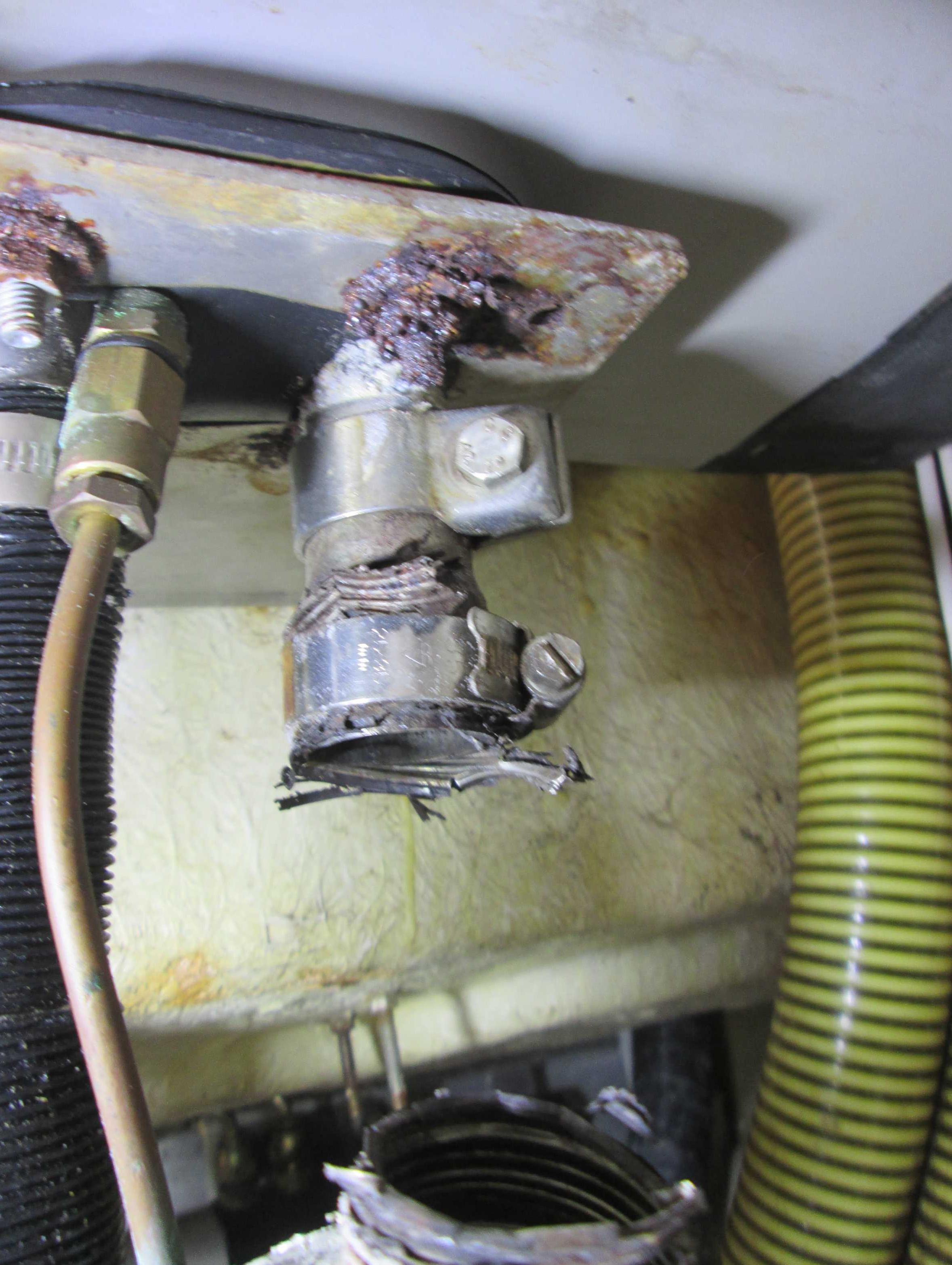Carbon Monoxide Alarms on Yachts - Does your vessel need them? Is your vessel fitted with a fuel-burning device, such as an engine, generator, gas cooker, gas heater, wood burning stove or diesel powered heater? If your boat has one or more of these, you should install at least one audible carbon monoxide alarm. Poor installation or faults in the associated ducting or exhaust systems of these appliances could allow Carbon Monoxide to leak into the adjacent living areas.

This broken exhaust pipe of a diesel-powered space heater could allow Carbon Monoxide to leak into the adjacent sleeping cabin
Install two Carbon Monoxide alarms if possible
Our marine surveys almost always recommend the installation of one or two Carbon Monoxide alarms.
Page 40 of this sample report of the pre-purchase survey of a Moody 35 gives an example of where a modern sailing yacht was fitted with a diesel engine and a 4 kWatt diesel powered heating system but did not have a single Carbon Monoxide alarm installed.
It is suggested that one alarm is mounted inside any sleeping cabin that is located closest to the fuel-burning appliance, positioned at sleeping head height. A second alarm should be installed in the saloon and mounted at a position that is approximately 1’ below the level of the coachroof. Note that the airspace closest to the coachroof is considered to be ‘dead space’ and the sensor will not function so well in this area.
BS EN 50291-2 are best suited for use on boats
Refer to the following website for details of alarms that are approved as meeting BS EN 50291-2. These are best suited for boats:
http://www.boatsafetyscheme.org/stay-safe/carbon-monoxide-(co)/co-alarms-save-lives/
For further information on an incident relating to Carbon Monoxide poisoning on a pleasure vessel, see this link: Carbon Monoxide poisoning on motor cruiser Vasquez
